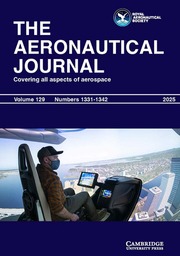No CrossRef data available.
Article contents
Quantifying human-centric uncertainty in aircraft maintenance
Published online by Cambridge University Press: 29 August 2025
Abstract
Human-centric uncertainty remains one of the most persistent yet least quantified sources of risk in aviation maintenance. Although established safety frameworks such as SMS (safety management system), STAMP (Systems-Theoretic Accident Model and Processes), and FRAM (Functional Resonance Analysis Method) have advanced systemic oversight, they fall short in capturing the dynamic, context-dependent variability of human performance in real time. This study introduces the uncertainty quantification in aircraft maintenance (UQAM) framework – a novel, predictive safety tool designed to measure and manage operational uncertainty at the task level. The integrated uncertainty equation (IUE) is central to the model, a mathematical formulation that synthesises eight empirically derived uncertainty factors into a single, actionable score. Using a mixed-methods design, the research draws on thematic analysis of 49 semi-structured interviews with licensed maintenance engineers, followed by a 12-month field validation across four distinct maintenance tasks. Results demonstrate that the IUE effectively distinguishes between low, moderate and high-risk scenarios while remaining sensitive to procedural anomalies, diagnostic ambiguity and environmental complexity. Heatmap visualisations further enable supervisory teams to identify dominant uncertainty drivers and implement targeted interventions. UQAM enhances predictive governance, supports real-time decision-making and advances the evolution of next-generation safety systems in high-reliability aviation environments by embedding quantitative uncertainty metrics into existing safety architectures.
Information
- Type
- Research Article
- Information
- Copyright
- © The Author(s), 2025. Published by Cambridge University Press on behalf of Royal Aeronautical Society


